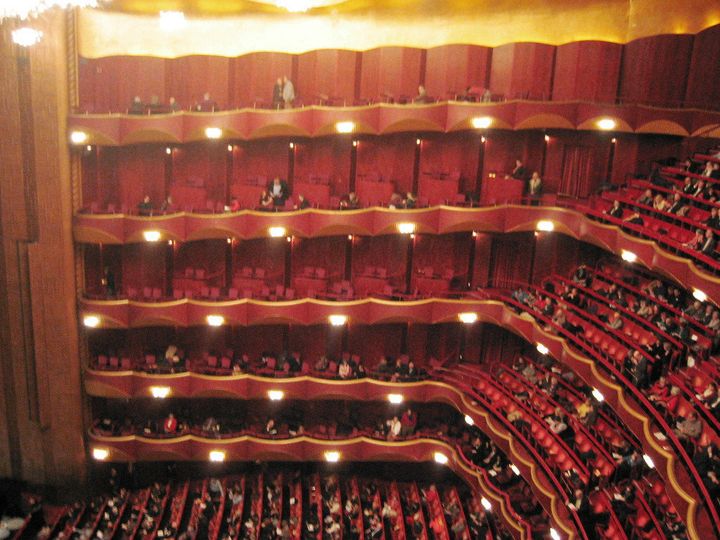
Two queens, one throne. The future of England at stake. Maria Stuarda, Donizetti's beautiful lyric drama on the showdown between Queen Elizabeth I and Mary, Queen of Scots, arrived on the Metropolitan Opera stage for the first time in a vocally brilliant New Year's Eve premiere that pit Joyce DiDonato opposite Elza van den Heever as the dueling monarchs.
With Matthew Polenzani as Robert Dudley, Earl of Leicester, singing the third side of an invented love triangle and the Met Opera chorus in glorious voice, this exciting Met production will be available to audiences in 64 countries around the world when it is presented as part of the Met's Live in HD series on January 19.
DiDonato, one of our top mezzo-sopranos, is stunning as Maria, even if she forgoes some of the vocal pyrotechnics, including the concluding high note that sopranos traditionally indulge in. With delicate phrasing and masterful intonation, DiDonato creates a portrait of piety through the purity of her voice alone. Her pianissimo passages are as soft and gentle as the wind in the trees.
Donizetti's score is unusual in that either role -- Mary or Elizabeth -- can be cast for a soprano or a mezzo. Some of the great bel canto sopranos of the last few decades, including Callas, Sutherland and Sills, have undertaken the role of Mary. DiDonato makes a strong case that it rightfully belongs to the mezzo.
In her Met debut, van den Heever delivers an admirably sung performance as Elizabeth and quickly won the opening night audience with a vibrant coloratura and seemingly effortless range from the lower to upper registers. Her interpretation of the character is another matter. Van den Heever's Elizabeth swaggers around the stage like a bow-legged cowboy, a sort of Annie Oakley in ruff and petticoat. Whether it's her own reading of the part or that of director David McVicar, it's one that is distracting at best and at times seems more suited for opera buffa than the "lyric tragedy" Donizetti wrote.
Polenzani delivers a solid performance as Leicester, though the voice is a bit thin at the very top. Donizetti's score contains pensive arias, poignant duets, ensembles and choruses, especially in the closing scene as Mary prepares for her execution, and the Met chorus just keeps getting better, earning an ovation of its own. There are also beautiful orchestral passages and Maurizio Benini conducted the Met orchestra splendidly.
The libretto for Maria Stuarda, by Giuseppe Bardari, closely follows Friedrich Schiller's play of the same name, which is well-known for playing fast and loose with history. Both opera and play, for example, include a meeting between Elizabeth and Mary in the forest near Fotheringhay Castle, where Mary was being held prisoner. In fact, the two women never met. Even more egregious is the fictive love interest that both women have Dudley, and the Earl's avowed passion for Mary.
But in opera, the music pretty much trumps history, and in Maria Stuarda Donizetti's confrontation scene between the two women at the end of Act 1, a furious 16th-century cat fight in which each hurls invective at the other, makes terrific drama.
The actual events that the opera (and the play) dramatize took place in an England that was still torn over Protestant vs. Catholic loyalties. Mary, a distant cousin of Elizabeth's, devoutly clung to her Catholic upbringing and Catholics all over Europe backed her dubious claim to the English throne over Elizabeth, who was firm in her Protestant convictions. But Mary's attempts to foster a rebellion in England finally convinced Elizabeth to sign her cousin's death warrant.
The functional Met production adheres to the times in which the opera takes place and moves rapidly from one scene to the next. The set for the opening in Whitehall Palace, for example, lifts to the flies while the trees of Fotheringhay forest fall into place for the scene that introduces Mary. The scene in Mary's cell in Act 2 has a backdrop with her famous "casket letters" scribbled on them.